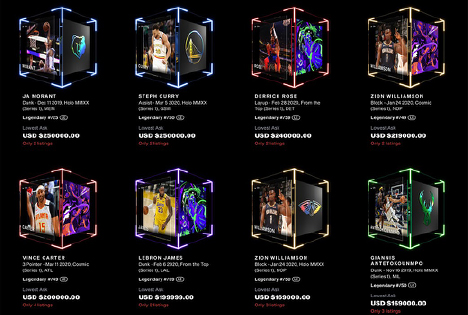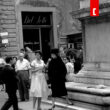NFTs are very hot. They’re the talk of the digital sphere, the newest source of Boomer befuddlement, and the art market’s next big investment. Every day, new players enter the NFT arena, from the NBA to Paris Hilton to Kings of Leon, creating a new frontier for creators, collectors, and brands. So, we thought we’d unpack this cultural moment and break down what the blockchain phenomenon means for our future.
by Brenda Martinez
The ABCs of NFTs
To start off: NFTs, non-fungible tokens, are digital files that can be traded as unique items. The content is backed by a blockchain and therefore, forever traceable. NFTs bring a materiality to our digital world, extending collectability culture to Internet ephemera. And while others can have copies of a NFT, owning the original is a means of flexing.
NFTs aren’t new, but they’ve really taken off the past few weeks, with the biggest boom happening in the artworld. Christie’s famously just sold a digital collage by Beeple for $69.3 million, marking the first solely-digital artwork sold at auction and the third highest price fetched for a work by a living artist. Artists across industries are beginning to experiment with NFTs because, importantly, they offer direct ways for artists to make money from their content.
Creators can maintain copyright and distribution rights to their content with NFTs, as well as earn a percentage every time their NFT is sold. The rise of NFTs is related to the rise of direct-to-fan media sites like OnlyFans and points to the broader conversation about creative ownership and who gets to profit from cultural products.
How Brands are Engaging with NFTs
No doubt more brands will begin to make their mark on the NFT landscape, but Taco Bell was among the first. The chain dropped five digital designs with $1 starting bids on Rarible called NFTacoBells, selling out in under 30 minutes. The NFTacoBells had an additional, more tangible element: every original purchase came with a $500 gift card.

Meanwhile, DC Comics is taking another route, urging its freelance artists to not use its IP for NFT art. It seems DC is attempting to restrict its artists’ ability to distinguish themselves, both financially and stylistically, within the brand. But in the world of NFTs, it’s artists that are popularizing the medium, from Beeple to Chris Torres to Grimes. Because anyone can replicate a piece of cryptoart, Taco Bell’s, for example, are all over their Twitter & IG feeds, ripe for the taking, it’s the digital signature that imparts value.
How Brands Can Engage with NFTs
This past year, we’ve not only seen an explosion of content but also new platforms, from Clubhouse to Dispo to a slew of others in between. Brands are understandably hesitant to jump onto those platforms, but one thing has become increasingly obvious – the best way for brands to engage with the new is through partnerships, collaborations, and artist commissions. A brand that hops on a trend or a platform without understanding it is simply following the headlines, but a brand that partners with relevant creators is a cultural producer.
Tapping both established and emerging artists, brands can foster co-creation that goes beyond the role of the patron by giving artists access to archives and the license to reimagine imagery into something fresh and new. And, though NFTs exist in the realm of the digital, the initial purchase of one can still have an attached tangible product, thereby cementing the cultural value of a piece of digital ephemera.

The Issues Ahead
Amidst the gold rush of NFTs are other concerns. Most pressingly, the environmental effects of blockchain tech will only intensify as the market continues to grow. Beyond the environmental concerns, there’s also the worry that, as with any speculative market, the NFT art world may soon lose its allure, and the bubble will burst. All of that can easily prompt a brand to stay cautious; but, if an NFT bubble is a possibility, it’s also entirely possible to imagine that NFTs will become a staple in our increasingly-digital world.
As with any new platform, the potential for brand partnerships is still up for grabs. The major takeaway is, for a brand to engage with novelty effectively, there must be purpose beyond trying to appear relevant. There must be intention behind the engagement, with smart use of the platform’s unique qualities. Thus, the most effective way to actually add value to the cultural landscape is by working with in-touch creatives.
Brenda Martinez is Junior Creative Strategist The Projects.













